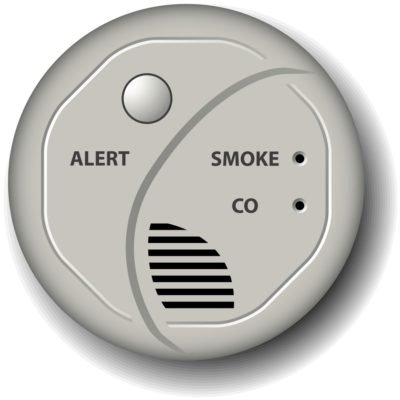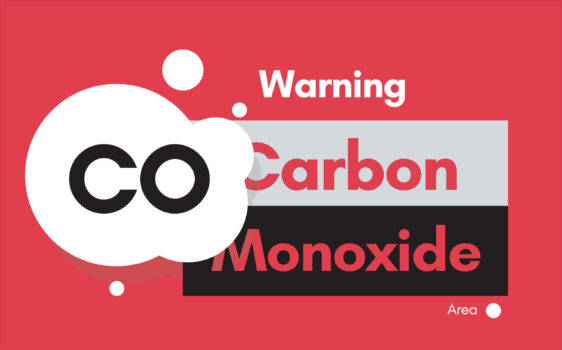Carbon monoxide is an odorless, colorless, tasteless, and dangerous gas. Because we can’t see, smell, or taste carbon monoxide, we have to rely on carbon dioxide monitors to detect it.
Potential Sources of Carbon Monoxide Include:
- Smoke from a fire.
- Heating systems that aren’t working properly.
- Cars left running in garages.
- Charcoal grills, camping stoves, and kerosene heaters that are used indoors.
What are the Symptoms of Carbon Monoxide Poisoning?
The symptoms of carbon monoxide poisoning can be subtle, especially in infants and toddlers. Babies and small children with carbon monoxide poisoning may be super fussy, vomit, and seem “out of it.”
Mild symptoms of carbon monoxide poisoning in older kids & adults can mimic the flu (but without a fever).
For Instance, Older Kids with Carbon Monoxide Poisoning May Complain Of:
- Headaches.
- Dizziness.
- Nausea.
- Fatigue.
- Chest Pain.
Patients With More Advanced Cases of Carbon Monoxide Poisoning May Have:
- Cherry Red Lips and Skin.
Insider Info: Although this is a classic red flag finding for carbon monoxide poisoning. it’s more likely to show up on the pediatric boards (a soul-crushing exam that pediatricians have to take), than in real-life patients.
- Seizures.
- Fainting.
- A Coma.
- Heart Problems Such as an Arrhythmia (an Irregular Heartbeat) and Poor Blood Flow to the Heart (Fancy Name: Myocardial Ischemia).
Note: Carbon monoxide poisoning can be fatal, if severe.
PediaTrivia: Kids are more susceptible to carbon monoxide poisoning than adults because they breathe faster (which causes them to take in greater amounts of carbon monoxide overall).
Here’s a Classic Carbon Monoxide Poisoning Scenario (That Doctors-In-Training Get Tested on in Medical School and Residency):
A family in a log cabin in the middle of the woods in the winter huddles around a kerosene heater. Soon after, the entire family falls ill with flu-like symptoms. One family member has cherry red lips and seems confused.
Jeez, I’d Like to Avoid All of That. Tell Me How.
Prevention is the best and simplest approach when it comes to carbon monoxide poisoning.

To Help Prevent Carbon Monoxide Poisoning:
- Install carbon monoxide monitors in your home.
Note: You can get dual carbon monoxide and smoke detectors.
PediaWise Pick: Kidde Smoke and Carbon Monoxide Detector Alarm with Voice Warning.
- Make sure that your heating system is working properly.
- Do NOT run a generator inside your home.
- Refrain from using a portable propane grill or a charcoal grill inside.
Can Carbon Monoxide Poisoning Be Treated if Someone Gets It?
Yes. Carbon monoxide poisoning can be successfully treated if it’s caught early enough. Here’s how:
- Step 1: If you suspect carbon monoxide poisoning (or if your carbon monoxide monitor goes off) go outside and call 911.
Insider Info: The 911 responders will usually call Poison Control (1-800-222-1222) for advice on management.
- Step 2: The treatment for carbon monoxide poisoning is OXYGEN plus monitoring in the hospital (for heart problems). The oxygen will be delivered through a face mask, initially. For more severe cases, patients may be put in a hyperbaric oxygen chamber. This is the same chamber that’s used to treat the “bends” in scuba divers.
The Bottom Line
Although carbon monoxide poisoning isn’t all that common, it can be deadly. The good news is that it can be prevented through education and through the installation of working carbon monoxide detectors in our homes.
Parting PediaTip: If your carbon monoxide detector has replaceable batteries, remember to change them every 6 months. This will help keep your family safe and will prevent you from having to deal with the annoying beeping sound that signals a low (or dead) battery.





